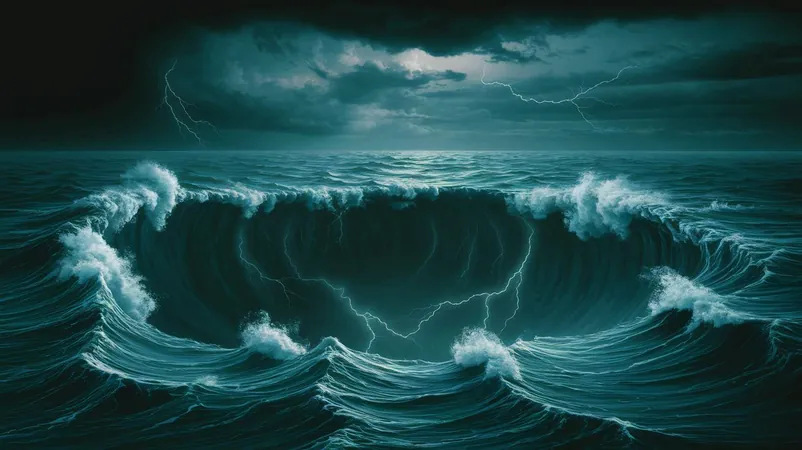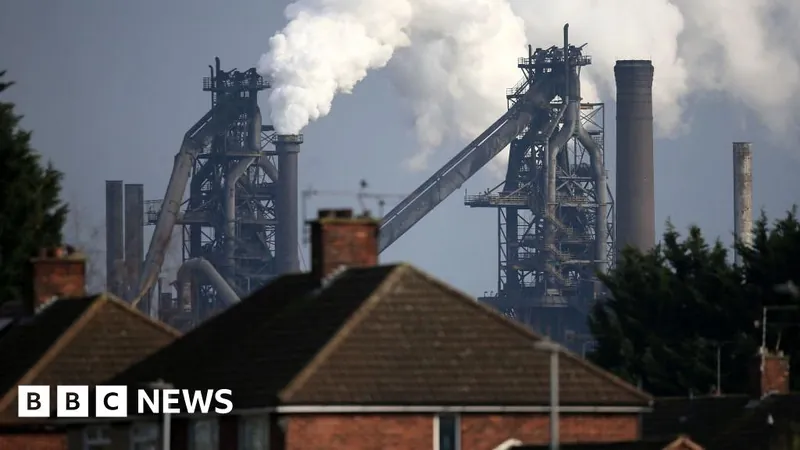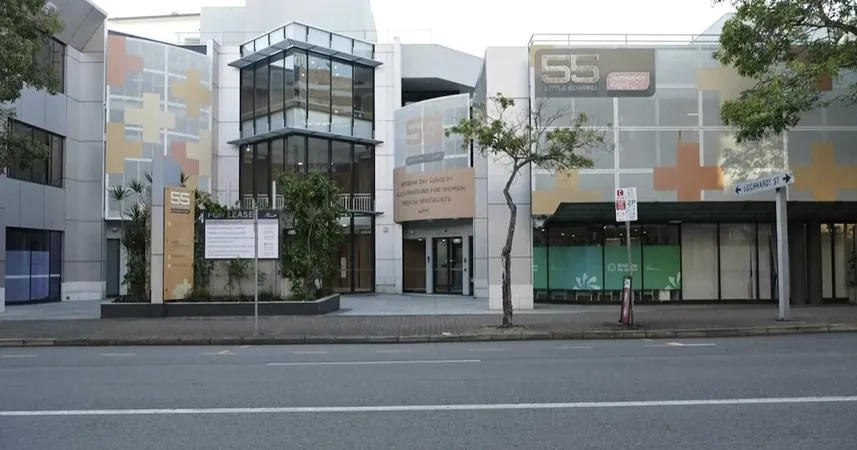
Unveiling the Stormy Secrets: The Great Blue Hole and the Unstoppable Climate Crisis
2025-04-06
Author: Jacob
In the depths of the Caribbean, an ancient natural wonder called the Great Blue Hole is revealing its unsettling secrets about the planet's storm history. This underwater cavern, with its awe-inspiring circular abyss, is not just a popular diving site; it serves as a crucial reservoir of climatic information. Recent research has uncovered alarming trends in storm intensity and frequency, raising red flags about the future of our climate.
The Geological Splendor of Blue Holes
Blue holes are unique geological formations created when limestone caves collapse and fill with seawater. These spectacular underwater wells, often surrounded by vibrant coral reefs, display a mesmerizing dark blue hue that has captured the imagination of explorers and scientists alike. The Great Blue Hole in Belize, the largest of its kind, dives to a depth of 125 meters (410 feet) and measures 300 meters (984 feet) across, making it a remarkable sight that encapsulates both beauty and scientific significance.
These formations function as natural archives, preserving layers of sediment that offer clues to the historical weather patterns above. As storms have passed over these depths throughout millennia, they have left behind distinct sediment layers, or "tempestites," allowing scientists to decode the geological history of storms with precision.
Decoding the Past: Groundbreaking Insights from Research
A recent study conducted by researchers from Goethe University Frankfurt involved extracting a 30-meter (98-foot) sediment core from the Great Blue Hole, effectively creating a time capsule that captures storm activity over the last 5,700 years. The findings point to a concerning trend: storm occurrences have been steadily rising, providing evidence of a changing climate that extends far beyond the limited records of modern instrumentation.
Researchers uncovered an astonishing 574 storm events documented within these sediment layers, illustrating a deep and complex history of climatic turmoil in the Caribbean. This ancient data offers an unparalleled viewpoint into the shifting dynamics of the region's weather systems, emphasizing that we are witnessing a stark increase in storms—a trend that is now accelerating.
Climate Change: The Catalyst for Intensified Storms
The alarming rise in storm frequency over the last two decades correlates directly with anthropogenic climate change. Warming ocean temperatures, driven by climactic shifts, are found to intensify storms, leading to more severe weather phenomena. The study highlights that changes in the Intertropical Convergence Zone—a critical area for storm formation—are reshaping storm patterns, suggesting future hurricanes may alter their pathways and landfall locations significantly.
A Troubling Outlook for the Future
Forecasts derived from this historical data indicate that the Caribbean could see as many as 45 tropical storms and hurricanes occur by the end of this century, a number that is drastically out of sync with natural variances observed over thousands of years. This poses severe implications for coastal communities, threatening their safety and livelihood against this rising tide of intense weather.
As we reflect on the lessons learned from the Great Blue Hole, we are compelled to face a pressing question: How do we champion sustainable practices to combat the impending impacts of climate change on vulnerable regions? This challenge requires a global effort to rethink our interactions with the environment and make swift, decisive actions towards preservation.
The Great Blue Hole serves not only as a window into our planet's past but also as an urgent reminder of the necessity to address climate change. As our understanding deepens, it becomes increasingly evident that the future of the Caribbean—and indeed, our entire planet—depends on the choices we make today.









 Brasil (PT)
Brasil (PT)
 Canada (EN)
Canada (EN)
 Chile (ES)
Chile (ES)
 Česko (CS)
Česko (CS)
 대한민국 (KO)
대한민국 (KO)
 España (ES)
España (ES)
 France (FR)
France (FR)
 Hong Kong (EN)
Hong Kong (EN)
 Italia (IT)
Italia (IT)
 日本 (JA)
日本 (JA)
 Magyarország (HU)
Magyarország (HU)
 Norge (NO)
Norge (NO)
 Polska (PL)
Polska (PL)
 Schweiz (DE)
Schweiz (DE)
 Singapore (EN)
Singapore (EN)
 Sverige (SV)
Sverige (SV)
 Suomi (FI)
Suomi (FI)
 Türkiye (TR)
Türkiye (TR)
 الإمارات العربية المتحدة (AR)
الإمارات العربية المتحدة (AR)